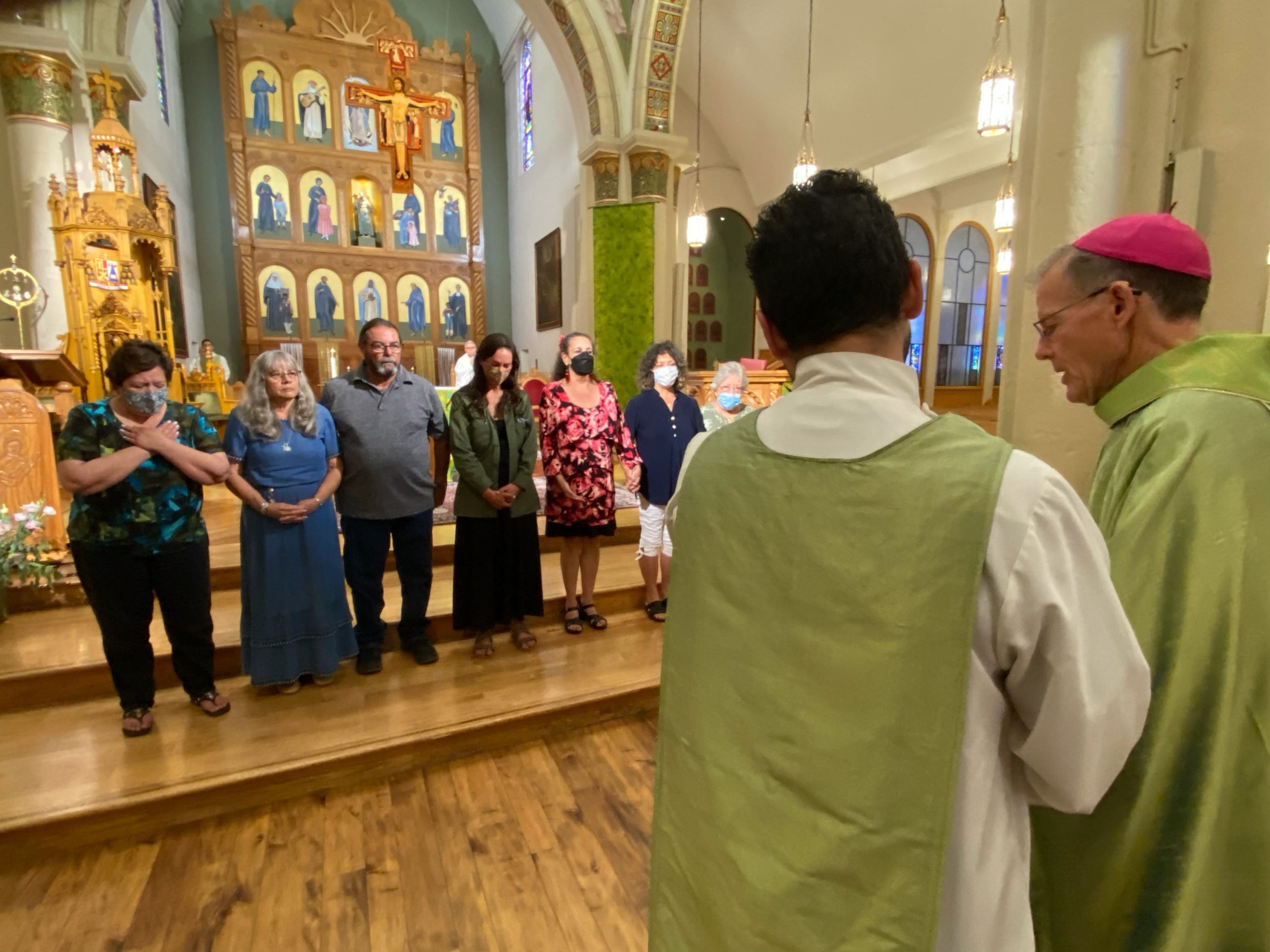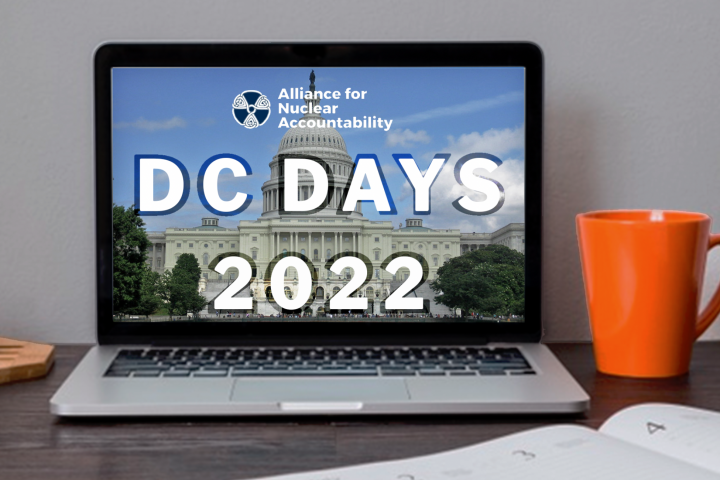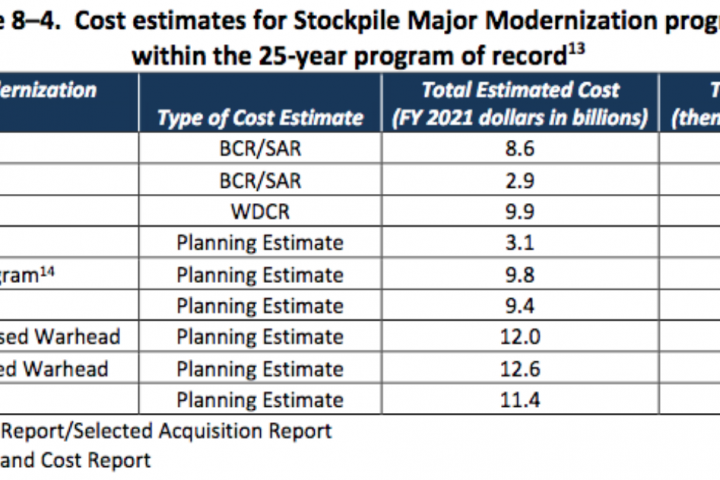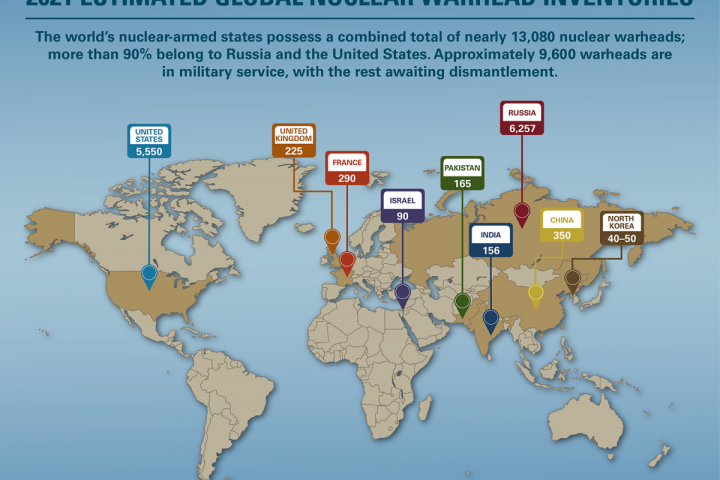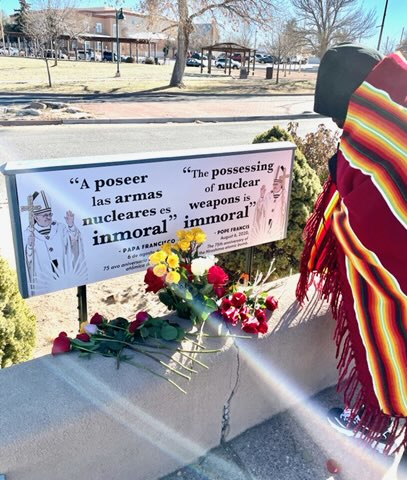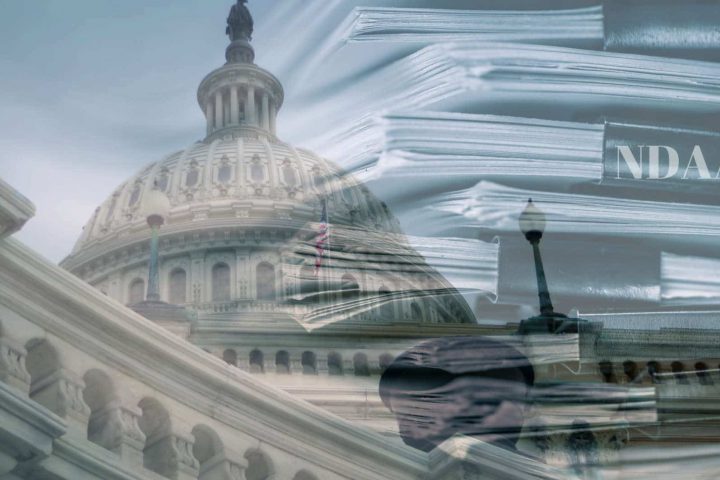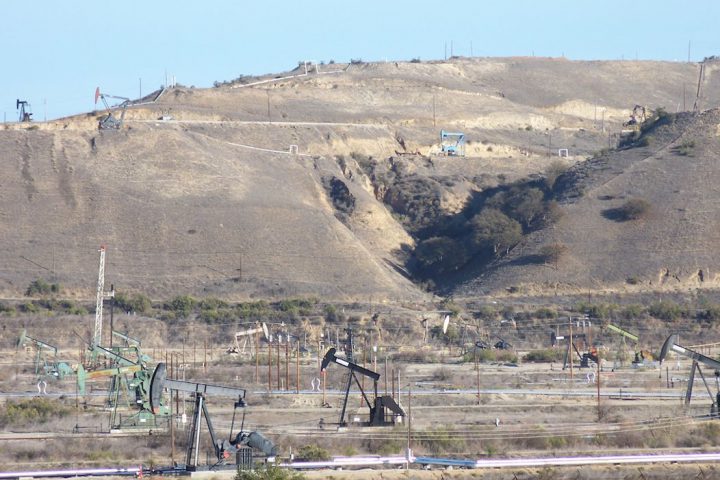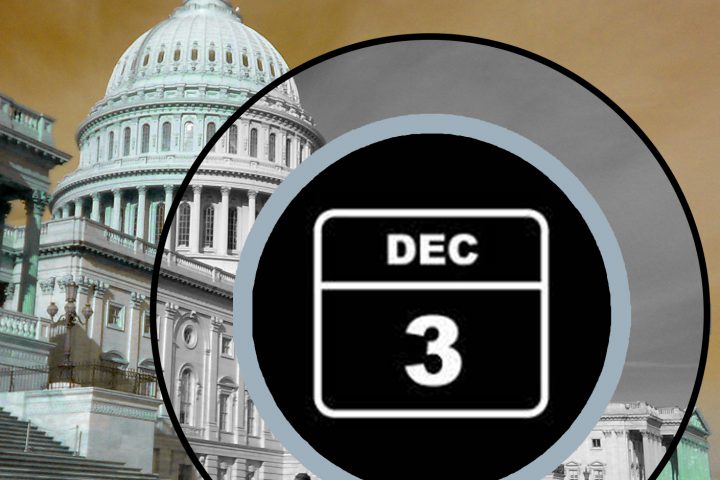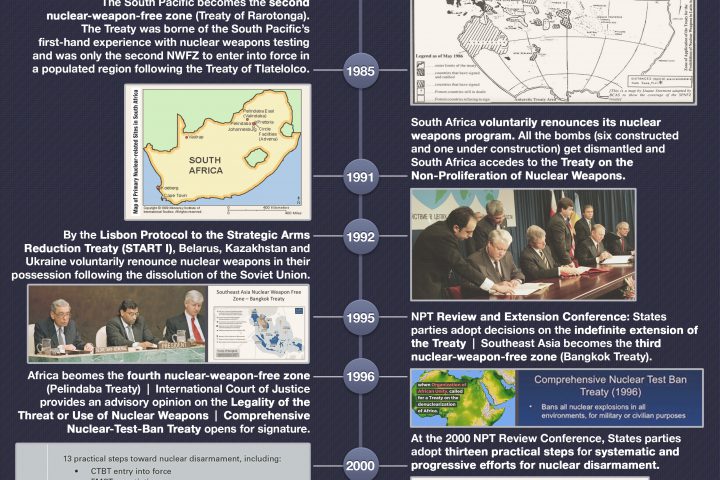Category: Nuclear Weapons
Breakthrough Study Bolsters RECA Claims for New Mexicans Exposed to Trinity Test Site Radiation
Plutonium Detections From Trinity Test Discovered 78 years After Test – Confirm RECA Must Be Expanded
Located in the Tularosa Basin in southern New Mexico, the Trinity Test Site marks the location of the first detonation of a nuclear weapon. Christopher Nolan’s “Oppenheimer” would have you believe this area is desolate, inhospitable and uninhabited. Contrary to this narrative and popular opinion, The area where the Trinity test occurred was not uninhabited. There were more than 13,000 New Mexicans living within a 50-mile radius. Many of those children, women and men were not warned before or after the test. The event marking the dawn of the nuclear age in July 1945 ushered in decades of health issues for residents living downwind due to exposure to radioactive fallout. The long-lasting impact of radiation exposure is a painful legacy that the New Mexican communities have had to bear.
New preliminary information strongly supports Radiation Exposure Compensation Act (RECA) status for New Mexicans downwind of the Trinity Test Site. In the past weeks, Michael E. Ketterer, (Professor Emeritus, Chemistry and Biochemistry, Northern Arizona University, Flagstaff, AZ) has completed a short “proof of principle” study that directly investigates where plutonium in soils originates by analyzing isotopic ratios, in a known portion of the Trinity Test plume.
Dr. Ketterer sampled soils along highways NM 42, US 54, NM 55, US 60, and US 380. The isotopes show that there is definitely plutonium from the Trinity Test in the northeast plume, and distinguishes it from global (stratospheric) background and New Mexico regional background from Nevada Test Site fallout. Soils along all five of these highways contain plutonium that reflects mixtures of Trinity Test debris and global/Nevada regional background fallout; in some cases, nearly 100% of the Pu originates from the Trinity Test.
Rest In Peace, Daniel Ellsberg
My dear father, #DanielEllsberg, died this morning June 16 at 1:24 a.m., four months after his diagnosis with pancreatic cancer. His family surrounded him as he took his last breath. He had no pain and died peacefully at home. https://t.co/x5qm73LW3c pic.twitter.com/GTBqgAADYj
— @RobertEllsberg (@RobertEllsberg) June 16, 2023
ICAN: The U.S. Spent $43.7 Billion on Nuclear Weapons Last Year—More Than EVERY Other Nuclear-Armed Nation COMBINED
A new report from the Nobel Peace Prize-winning International Campaign to Abolish Nuclear Weapons shows that the world’s nine nuclear-armed countries spent a total of $82.9 billion on nuclear weapons, “of which the private sector earned at least $29 billion in 2022.” The United States spent more than all of the other nuclear armed states combined, $43.7 billion. Russia spent 22% of what the U.S. did, at $9.6 billion, and China spent just over a quarter of the U.S. total, at $11.7 billion.
ICAN states, “The nine nuclear-armed states may have wasted $157,644 a minute on nuclear weapons in 2022, but no matter how much they spend, their nuclear weapons remain tools of terror and intimidation propped up by a mythical tale of deterrence that is rapidly unravelling.
“Through an ever-changing and challenging security environment, from security threats of climate change to the Covid-19 pandemic to the Russian invasion of Ukraine, nuclear weapons spending has steadily increased, with no resulting measurable improvement on the security environment…If anything, the situation is getting worse.”
“Luck, not reason or strategy, has kept nuclear weapons from being used in warfare for the past 78 years. But we can’t count on our luck to hold in perpetuity.”
If you need any more convincing of this fact, or of how “unacceptably dangerous nine countries’ reliance on nuclear weapons is,” watch this POV video where you’re the President and a nuclear attack is imminent. What do you do?
@kurz_gesagt POV: You’re the President and a nuclear attack is imminent. What do you do? #kurzgesagt #kurzgesagt_inanutshell #inanutshell #kurzgesagt_discover #nuclearwar #nuclearattack #nuclearattackwarning #pov #warzone #atomicbombs #emergency #urgent #decision #now ♬ original sound – Kurzgesagt – In A Nutshell
New Mexico: America’s Nuclear Colony
Money doesn’t talk, it swears. (Bob Dylan)
Quick Facts
Nuclear New Mexico
• DOE FY 2024 budget in NM is $10 billion (double next state).
– 75% core nuclear weapons research and production programs
– 28% life extended and new-design nuclear warheads ($2.65B)
– 20% expanded nuclear weapons production ($2 billion)
– $1.75B expanded plutonium “pit” bomb core production
– 5% for dumping radioactive bomb wastes (WIPP $484 million)
• Expanding nuclear weapons programs sold as jobs, jobs, jobs
• Los Alamos County (LAC) 70.6% non-Hispanic Caucasian
• LAC is 11th richest county in USA, most millionaires per capita
• Los Alamos County median household income $123,677
• Los Alamos County per capita income $64,521
• Los Alamos County persons in poverty 3.7%
• Los Alamos County has least children living in poverty in USA
• Los Alamos County rated best county to live in in USA
• Historically LAC schools subsidized added $8 million/yr from DOE
• LAC receives >$50 million in annual state gross receipts taxes
• Dept of Energy renewable spending in NM is 0.5% of $10B budget
• Indigenous and Hispanic lands unjustly seized for LANL
• World’s first atomic bomb detonated at Trinity Test
• 75 years still no govt tally of sick Navajo/Laguna uranium miners
• At least 8,280 sick Los Alamos and Sandia Labs workers
• Major hexavalent chromium groundwater contamination at LANL
• LANL plans to “cap and cover” and leave >200,000 yd3 of waste
• USA’s largest repository of warheads 2 miles south of ABQ airport
• Nation’s only plutonium “pit” bomb core production site at LANL
• Nation’s only dump for bomb wastes at Waste Isolation Pilot Plant
• NM targeted for all of nation’s lethal radioactive high-level wastes
New Mexico
• NM’s entire FY24 state operating budget is 6% less ($9.4 billion).
– 54% public education K-12 and higher
– 34% public health and safety
• NM per capita income falls from 32nd (1959) to 47th (2022)
• New Mexico 50% Hispanic, 11.2% Native American
• New Mexico 4th poorest state
• Median household income $54,020
• Average per capita income $29,624
• New Mexicans in poverty 18.4% (3rd highest in USA)
• 30% of New Mexican children live in poverty (highest rate in USA).
• New Mexico rated worst in well-being of children
• New Mexico is dead last in quality of public education
• Six surrounding county govts suffer net economic loss from LANL
• New Mexico has very abundant renewable energy resources
• DOE transfers excess land to white, wealthy Los Alamos County
• Generational cancers, Downwinders never compensated
• Chronically delayed remediation of 260 uranium mines and 7 mills
• NM facing decreasing water resources and increasing wildfires
• Lab commonly hires away senior NM Environment Dept officials
• >$5B for plutonium facilities, more than all NM schools & hospitals
• DOE threatens to sue NM over new WIPP state permit conditions
• Federal Nuclear Reg. Comm. grants license despite state opposition
New Mexico: America’s Nuclear Colony
New Mexico is the birthplace place of nuclear weapons. The “Land of Enchantment” has always been the single most important state within the U.S. nuclear weapons complex. The Department of Energy (DOE) will spend $10 billion in NM in FY 2024, 6% more than the operating budget of the entire state government.
Biden’s Nuclear Posture Review Fuels the New Nuclear Arms Race
Santa Fe, NM– Today, the Biden Administration has released its long awaited unclassified Nuclear Posture Review. It headlines a “Comprehensive, balanced approach to defending vital national security interests and reducing nuclear dangers.” It also declares that “deterrence alone will not reduce nuclear dangers.”
“Deterrence” against others has always been the publicly sold rationale for the United States’ nuclear weapons stockpile. First, there is the inconvenient fact that the U.S. was the first and only to use nuclear weapons in war. But secondly, the United States and the USSR (now Russia) never possessed their huge stockpiles for the sole purpose of deterrence anyway. Instead, their nuclear weapons policies have always been a hybrid of deterrence and nuclear war fighting, which threatens global annihilation to this very day.
FULL PRESS RELEASE [PDF]
Watchdogs File Suit for NNSA’s Performance Evaluation Reports

 Santa Fe, NM – Today, Nuclear Watch New Mexico has once again filed a lawsuit to pry loose the National Nuclear Security Administration’s (NNSA’s) full and complete Performance Evaluation Reports that evaluate contractor performance at its eight nuclear weapons sites. Approximately 57,000 people are employed by NNSA’s nuclear weapons production complex, 95% of them contractor personnel. NNSA and its parent Department of Energy have been on the independent Government Accountability Office’s “High Risk List” for project mismanagement and waste of taxpayers’ dollars since 1992.
Santa Fe, NM – Today, Nuclear Watch New Mexico has once again filed a lawsuit to pry loose the National Nuclear Security Administration’s (NNSA’s) full and complete Performance Evaluation Reports that evaluate contractor performance at its eight nuclear weapons sites. Approximately 57,000 people are employed by NNSA’s nuclear weapons production complex, 95% of them contractor personnel. NNSA and its parent Department of Energy have been on the independent Government Accountability Office’s “High Risk List” for project mismanagement and waste of taxpayers’ dollars since 1992.
NNSA’s Performance Evaluation Reports grade contractor performance, award performance fees and contain no classified information. Nevertheless, NNSA seeks to hide how taxpayers’ money is spent from the public, issuing only terse three page summaries instead of the full and complete Reports. Nuclear Watch sued in 2012 to obtain the full and complete Performance Evaluation Reports, after which NNSA started releasing them within three working days. But NNSA has again been releasing only summaries since 2019, despite a Freedom of Information Act request by Nuclear Watch that the agency never responded to.
To illustrate the importance of these Performance Evaluation Reports, in its FY 2021 Los Alamos Lab summary NNSA noted that the contractor “[s]ucessfully made advances in pit production processes…” Plutonium “pits” are the fissile cores of nuclear weapons whose expanded production the Pentagon has identified as the number one issue in the United States’ $2 trillion nuclear weapons “modernization” program. NNSA has directed the Los Alamos National Laboratory (LANL) to begin producing at least 30 pits per year by 2026 and the Savannah River Site (SRS) in South Carolina to begin producing at least 50 pits per year by 2030.
[Separate from Mass & Healing Ceremony] Watch Recording of Nagasaki Anniversary: Panel Discussion on Nuclear Disarmament from Local Interfaith Leaders
Why Funding for the SLCM Nuclear Warhead Should Be Deleted
Introduction: In 1991, in response to the ongoing collapse of the Soviet Union, President George H. Bush ordered the withdrawal of all nuclear-armed sea-launched cruise missiles (SLCMs) from U.S. surface ships and submarines. In 2018 President Trump’s Nuclear Posture Review proposed to redeploy SLCMs on Virginia-class attack submarines, saying they would provide the United States with “a needed non-strategic regional presence” that would address “the increasing need for flexible and low-yield options.”1 Congress subsequently approved $15.2 million in FY 2022 funding for the Navy’s new cruise missile and nuclear warhead.
In March 2022 President Biden transmitted a new classified Nuclear Posture Review to Congress that reportedly canceled the Sea-Launched Cruise Missile. In parallel, his proposed FY 2023 budget for the National Nuclear Security Administration (NNSA) has no funding for the SLCM nuclear warhead. This has prompted some congressional pushback, with one suggested compromise being continuing modest research funding. But as a Congressional Research Service analysis put it: “The Navy indicated that the program was “cost prohibitive and the acquisition schedule would have delivered capability late to need.”
The Twisted Myth that Nuclear Weapons Make Us Safer
“Mutually Assured Destruction” has been the MO of the world’s nuclear powers for decades. If Russia points a giant nuclear warhead toward the U.S., we would gear up to point an even more massive missile their way, and then, in theory, Russia shrugs its shoulders and says, “Eh, not worth it.” They would be completely “deterred” from advancing a nuclear attack based on the reality that doing this would mean the entire country, continent, and, ultimately the entire world, would become obliterated as we know it; the cost and the risk greatly outweigh any benefit. Supposedly. According to this thesis, the existence of nuclear weapons makes the cost of war seem frighteningly high and thus “discourage[s] states from starting any wars that might lead to the use of such weapons” (Kenneth Waltz, “The Spread of Nuclear Weapons: More May Better,”) The idea that nuclear weapons make conventional war safer is widely used as framing for why we need nukes at all, with one specific reason being spread wide and far that nuclear weapons can still be the equalizer against an adversary’s superior conventional forces.
The Alliance for Nuclear Accountability DC Days 2022: NukeWatch (Virtually) Visits Washington DC
The Alliance for Nuclear Accountability held its annual DC Days conference virtually again this year beginning May 16, 2022. Nuclear Watch New Mexico was proud to participate in this week-long event, where we discussed issues related to nuclear waste and nuclear weapons modernization under the Biden Administration, especially regarding expanded plutonium pit production at Los Alamos National Lab and at the Savannah River Site, and the generational problem of nuclear waste storage in the United States.
Continue reading
The W93 Warhead and Other Future New-Design Nuclear Weapons: Funding and Schedules
The W93 warhead is a proposed new-design submarine-launched nuclear weapon for the Navy. Its need is not clear given that the Navy’s W76 warhead recently completed a major “Life Extension Program” that extended its service life by at least 30 years and increased its accuracy through a new arming, fuzing and firing set. The Navy’s other sublaunched warhead, the W88, is entering a major “Alteration” which will refresh its conventional high explosives and give it a new arming, fuzing and firing set (presumably increasing its accuracy as well).
Millennials Memeing Nuclear War
 It seems like my generation has never before experienced this much nuclear fear. And what do we do with it? Laugh any way we can, for one. Putin has threatened the use of nuclear weapons by increasing Russia’s nuclear forces alertness levels and stating in a national address, “…For those who may be tempted to interfere in these developments from the outside, No matter who tries to stand in our way or all the more so create threats for our country and our people, they must know that Russia will respond immediately, and the consequences will be such as you have never seen in your entire history.”
It seems like my generation has never before experienced this much nuclear fear. And what do we do with it? Laugh any way we can, for one. Putin has threatened the use of nuclear weapons by increasing Russia’s nuclear forces alertness levels and stating in a national address, “…For those who may be tempted to interfere in these developments from the outside, No matter who tries to stand in our way or all the more so create threats for our country and our people, they must know that Russia will respond immediately, and the consequences will be such as you have never seen in your entire history.”
Nuclear simulations have come close to capturing the extra-short attention spans of millennials and gen-z, but there’s never been anything like the current real time situation that has ever put this much attention on the reality of the threat of nuclear weapons. And of course the only recourse for a heavy dose of reality is a flood of relevant comedy.
How are we Back Here…? Reflecting on the History of Nuclear Close Calls as Putin’s Threat Reignites Cold War Fears of Nuclear War
“Sadly, we are treading back through old historical patterns that we said that we would never permit to happen again,”
– Fiona Hill, Former Senior Director for Europe and Russia at the United States National Security Council, in an interview with POLITICO, today, February 28, 2022: ‘Yes, He Would’: Fiona Hill on Putin and Nukes
Happy Are Peacemakers Who Wake Up the Rest of Us
“The difference is that [Santa Fe Archbishop] Wester is alone and standing in what came to be the center of the “American Nuclear Soul” in Santa Fe calling us again to examine our American consciences. As Pope Francis said at the Peace Memorial in Hiroshima on Nov. 24, 2019, “The use of atomic energy for purposes of war is immoral, just as the possessing of nuclear weapons is immoral. … How can we speak of peace even as we build terrifying new weapons of war?”
Current U.S. Nuclear Weapons Issues: New Year’s Update — January 15, 2022
U.S. nuclear weapons issues:
- In anticipation of the NonProliferation Treaty Review Conference that was to start January 4 the P-5 (original nuclear weapons powers U.S., Russia, China, France and U.K.) came out with an unbelievable collective statement on how they are in compliance with the NPT Article VI mandate to disarm. Then the Review Conference was indefinitely postponed because of omicron.
- Biden signed the FY 2022 Defense Authorization Act (DAA). Congress gave the Pentagon $24 billion more than Biden asked for. So much for ending endless wars. The DAA fully authorizes what the Biden Administration asked for National Nuclear Security Administration nuclear weapons programs, which increased Trump’s FY 2021 budget which saw a 25% from his FY 2002 budget. LANL is to get a cool billion in FY 2022 for expanded plutonium pit production alone.
- Still no appropriations. Second Continuing Resolution (CR) runs out in February.
- First anniversary of Treaty on the Prohibition of Nuclear Weapons January 22
Signs Calling for a Future of Peace Through a Reminder of the Past
Less than a week before the Christmas holiday, over 125 people came together at the statue of Our Lady of Guadalupe in the afternoon of Sunday, December 19th to listen to Archbishop John C. Wester of the Archdiocese of Santa Fe give a blessing to two “signs of peace” he unveiled on-site during a short ceremony. The signs were revealed to show an image of Pope Francis and a quote uttered by the pope in Hiroshima in 2020: “The possession of nuclear arms is immoral.” During the blessing, the Archbishop spoke on his memories of “those days during the Cuban missile crisis when I would walk home from school having been instructed what to do in the event of a nuclear attack within a few thousand yards of a nuke missile site in San Francisco,” before issuing a call for the world to rid itself its nuclear weapons.
“We need to be instruments of peace,” he said, especially as we head into the Christmas season, a “season of peace.”
Wester said that the current arms race “is more ominous” than any that came before. He touched on the growing tension around the Russia-Ukraine border in mentioning that there are at least “40 active conflicts in the world,” and said “our archdiocese needs to be facilitating, encouraging an ongoing conversation” about nuclear disarmament. This is especially true in light of the fact that two of the US’s three nuclear weapons laboratories are to be found in the dioceses of Sandia and Los Alamos, and on top of that there are more nuclear warheads in his dioceses from the 2,500-some count stored in reserve at the Kirtland Air Force Base at Albuquerque. All of this means that more money is spent in his dioceses than any other dioceses in the country and perhaps the world.
Current U.S. Nuclear Weapons Issues: Monthly Update — December 15, 2021
FY 2022 National Defense Authorization Act: The Bad News.
As Politico put it:
PROGRESSIVES’ PENTAGON POUNDING: … progressives barely put their stamp on Pentagon policy this go-round. Bipartisan provisions requiring women to register for the draft, cracking down on Saudi Arabia and imposing sanctions on Russia were nixed; legislation repealing outdated Iraq war authorizations fell by the wayside; reforms to the military justice system and efforts to combat extremism in the ranks were pared back; and a proposal to give Washington, D.C., control of its National Guard was dropped,” they wrote. Democrats hold power in the House, Senate and White House for the first time in more than a decade, yet the high-profile defense bill got more GOP votes than from Biden’s own party. As progressive lawmakers made their dissatisfaction with the bill’s high price tag clear, centrist Democrats knew they needed Republican support to pass the House and Senate.”
Progressives truly felt they had a historic chance to turn their priorities into policy, but the realities of a 50-50 Senate with no filibuster made that near impossible. And with midterms next year, it’s likely they missed their best chance.
Nuclear weapons: Congress added $500 million to Biden’s request for NNSA Total Weapons Activities, which was essentially Trump’s request to begin with. Trump’s Sea-Launched Cruise Missile and B83 (1.2 megatons) service life program were kept. $1.72 billion request for “Plutonium Modernization” authorized.
- However, the NDAA is authorization, not appropriations. The 2nd Continuing Resolution runs until February after which the appropriators will have to come up with something. There’s a chance that the Sea-Launched Cruise Missile and B83 sustainment program could be shot down. While those would be notable victories, they really only amount to damage control (i.e., rolling back two of Trump’s pet projects) as the $1.7 trillion modernization beast lumbers on.
Where to Store the Nation’s Nuclear Waste? No One Has the Answer, Exactly. But It’s Probably Not “In a High-Risk Seismic Zone.”
It seems obvious that “when assessing the aptitude of a site to receive a deep nuclear-waste repository, seismic activity should be taken into account.” (IAEA). At the moment, the only repository of this kind in the U.S. is the Waste Isolation Pilot Plant (WIPP), the nation’s main nuclear weapons waste storage site. WIPP lies a half mile underground in a salt formation in southeastern New Mexico. Additional nuclear waste storage facilities are planned to be built nearby, along the border between southeastern New Mexico and west Texas, where risks of quakes caused by oil and gas fracking operations in the area are rising.
“The occurrence of smaller earthquakes began to increase in 2017, when oil and gas boomed in the region, up to about three per day recently. In 2021, records show the region was on track for more than 1,200 earthquakes with magnitudes of 1 to 4.” KRQE
In New Mexico in July, a 4.0 temblor shook the southeast corner of the state. Meanwhile, just over the border on the Texas side, the U.S. Nuclear Regulatory Commission approved a high-level waste facility, and Holtec International is trying to put their share of the nation’s commercial nuclear waste there as well, on the New Mexico side.. Holtec, with support from the Nuclear Regulatory Commission, wants to build a nuclear waste storage facility for up to 100,000 tons of spent nuclear fuel rods 12 miles north of WIPP, a plan opposed by New Mexico Gov. Michelle Lujan Grisham and others in state government.
“All of these nuclear sites are surrounded by brine injection wells, the likely cause of the increased seismicity in the basin.” Source NM
Current U.S. Nuclear Weapons Issues Updates — November 15, 2021
The current Continuing Resolution keeping the government running expires 12/3. Another Continuing Resolution is likely.
The Pentagon has released a major threat assessment of China at https://media.defense.gov/2021/Nov/03/2002885874/-1/-1/0/2021-CMPR-FINAL.PDF.
Under “Nuclear Capabilities” it concludes:
► Over the next decade, the PRC [People’s Republic of China] aims to modernize, diversify, and expand its nuclear forces.
► The PRC is investing in, and expanding, the number of its land-, sea-, and air-based nuclear delivery platforms and constructing the infrastructure necessary to support this major expansion of its nuclear forces.
► The PRC is also supporting this expansion by increasing its capacity to produce and separate plutonium by constructing fast breeder reactors and reprocessing facilities.
► The accelerating pace of the PRC’s nuclear expansion may enable the PRC to have up to 700 deliverable nuclear warheads by 2027. The PRC likely intends to have at least 1,000 warheads by 2030, exceeding the pace and size the DoD projected in 2020.
► The PRC has possibly already established a nascent “nuclear triad” with the development of a nuclear capable air-launched ballistic missile (ALBM) and improvement of its ground and sea-based nuclear capabilities.
► New developments in 2020 further suggest that the PRC intends to increase the peacetime readiness of its nuclear forces by moving to a launch-on-warning (LOW) posture with an expanded silo-based force.
This is bound to have a major influence on Biden’s Nuclear Posture Review, to be released in early 2022. China’s expansion of its nuclear weapons capabilities, along with U.S. and Russian “modernization” programs, may also be big issues at the January 2022 NonProliferation Treaty Review Conference.
Current U.S. Nuclear Weapons Issues Updates — October 15, 2021
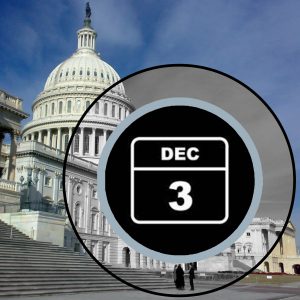
Congress passed a continuing resolution that keeps the government running until December 3. It freezes funding at 2021 levels which at least prevents short-term budget increases for nuclear weapons modernization programs and has no “anomalies” (i.e. exceptions) for these programs. That said, Biden passed on most of Trump’s nuclear weapons excesses forward in his FY 2022 budget, so it’s not like it makes a whole lot of difference.
Mitch McConnell agreed to let the Democrats raise the national debt ceiling, thereby averting national and international economic disaster. How gracious of him.
Democrats and Republicans joined together to roll Biden on the money in the FY 2023 Defense Authorization Act for the entire military (including the National Nuclear Security Administration (NNSA). These bipartisan porkmeisters added $23.9 billion for $768 billion in total defense spending. The new bogeyman China was repeatedly invoked as the rationale (in comparison China now spends around $250 billion annually on its military).
Continue reading
International Day for the Total Elimination of Nuclear Weapons 2021
Today, Sunday, September 26, 2021, marks the United Nations International Day for the Total Elimination of Nuclear Weapons. The United Nations has been working toward achieving global nuclear disarmament since the organization’s inception; it was the subject of the General Assembly’s first resolution in 1946, with a mandate to make specific proposals for the elimination of atomic weapons and all other major weapons adaptable to mass destruction. The International Day for the Total Elimination of Nuclear Weapons has been observed annually since 2014, serving as a tool to enhance public awareness and education about the threat posed to humanity by nuclear weapons and the necessity for their total elimination. In 2013, the year the International Day for the Total Elimination of Nuclear Weapons was introduced, the President of the General Assembly noted that a “renewed international focus on the catastrophic consequences of nuclear weapons has led to a reinvigoration of international nuclear disarmament efforts.”

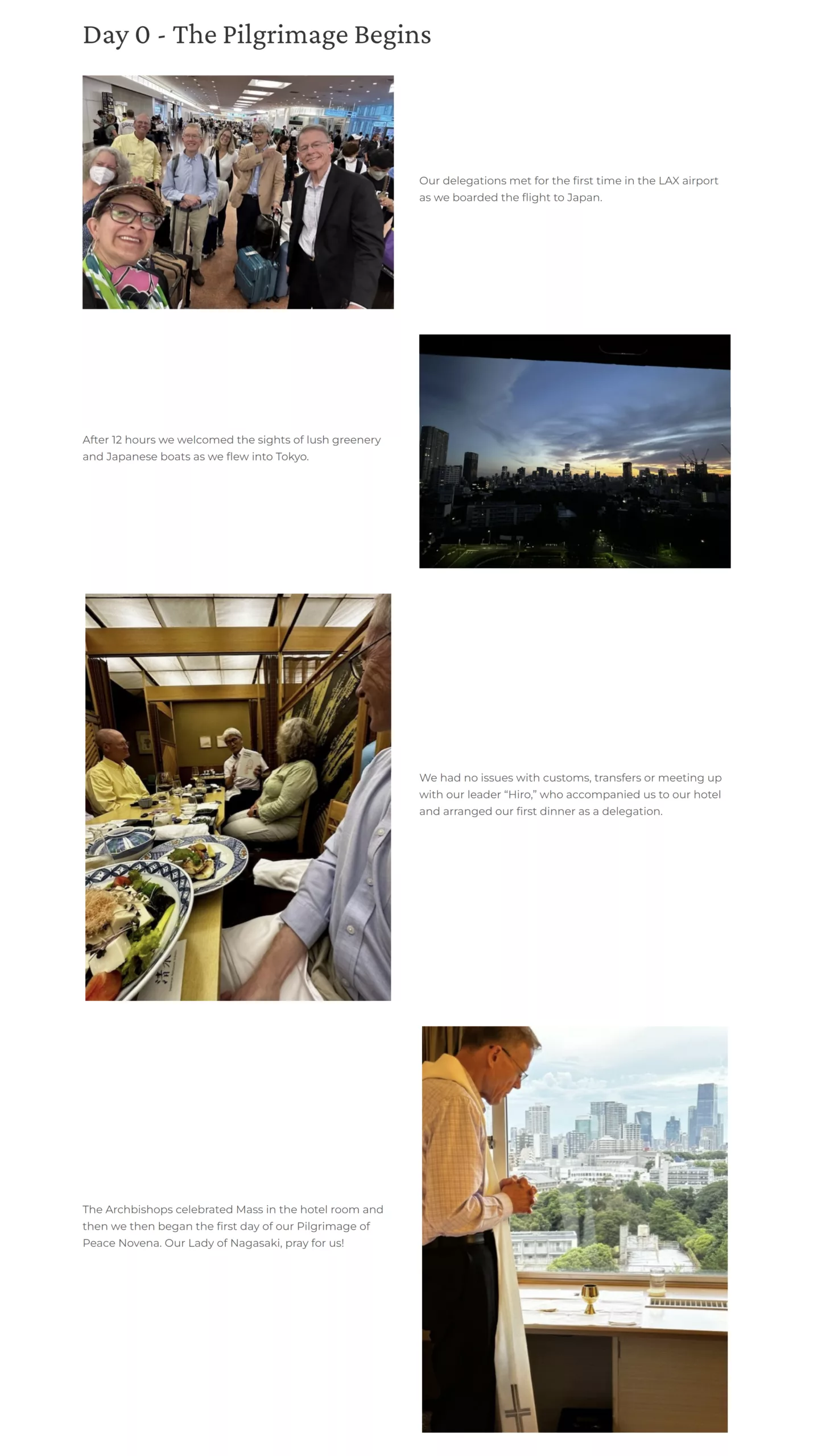

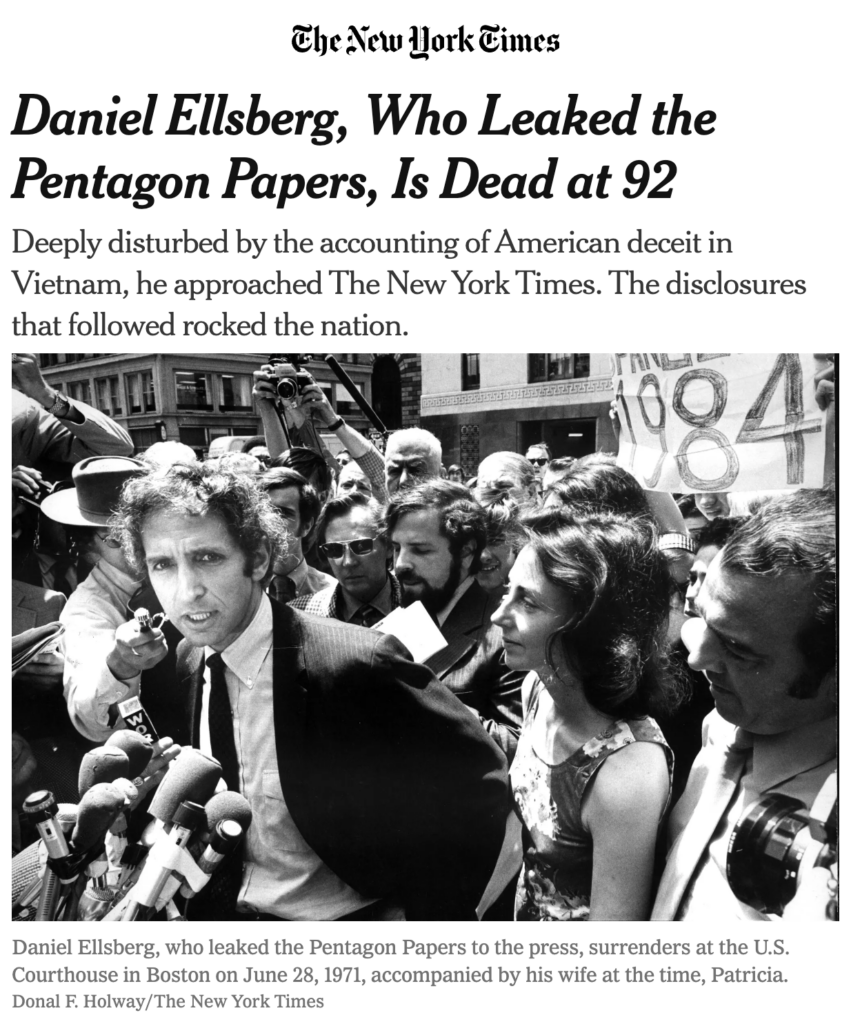


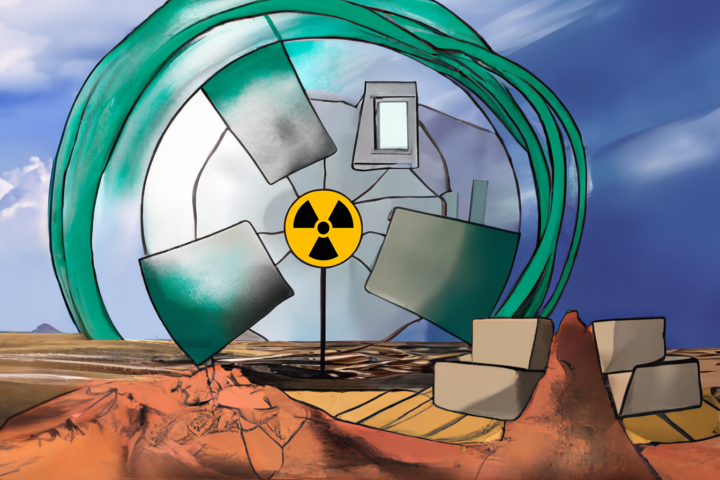
/cdn.vox-cdn.com/uploads/chorus_image/image/71550878/GettyImages_515016314a.0.jpg)
